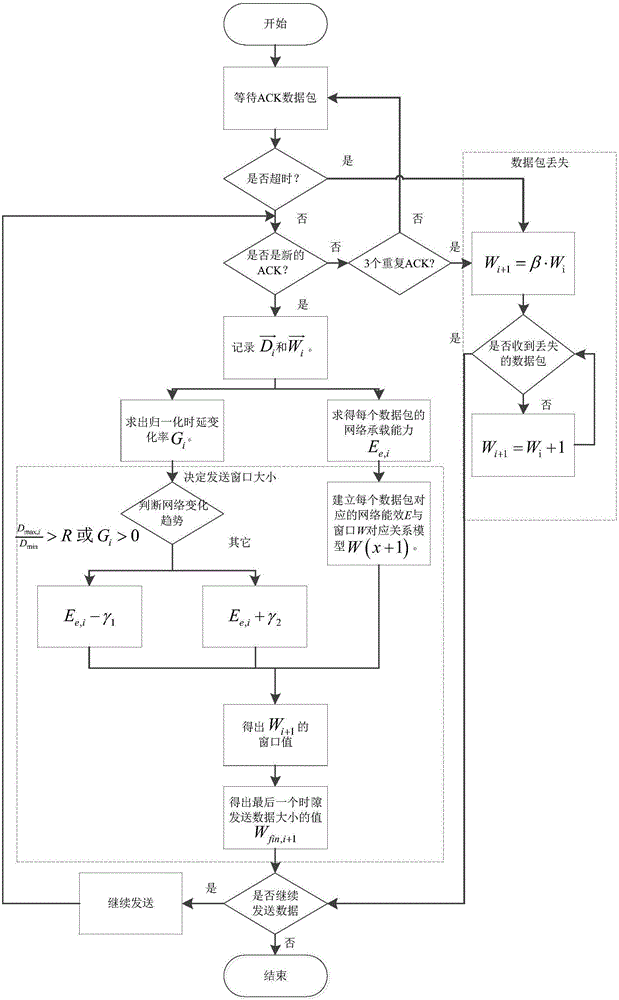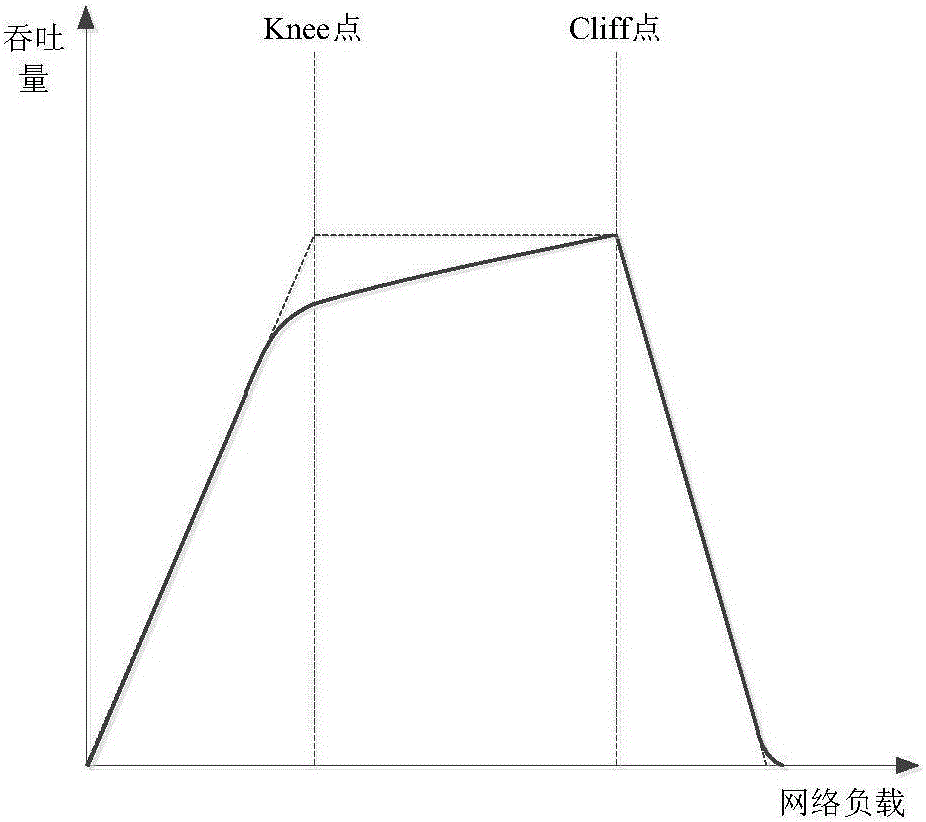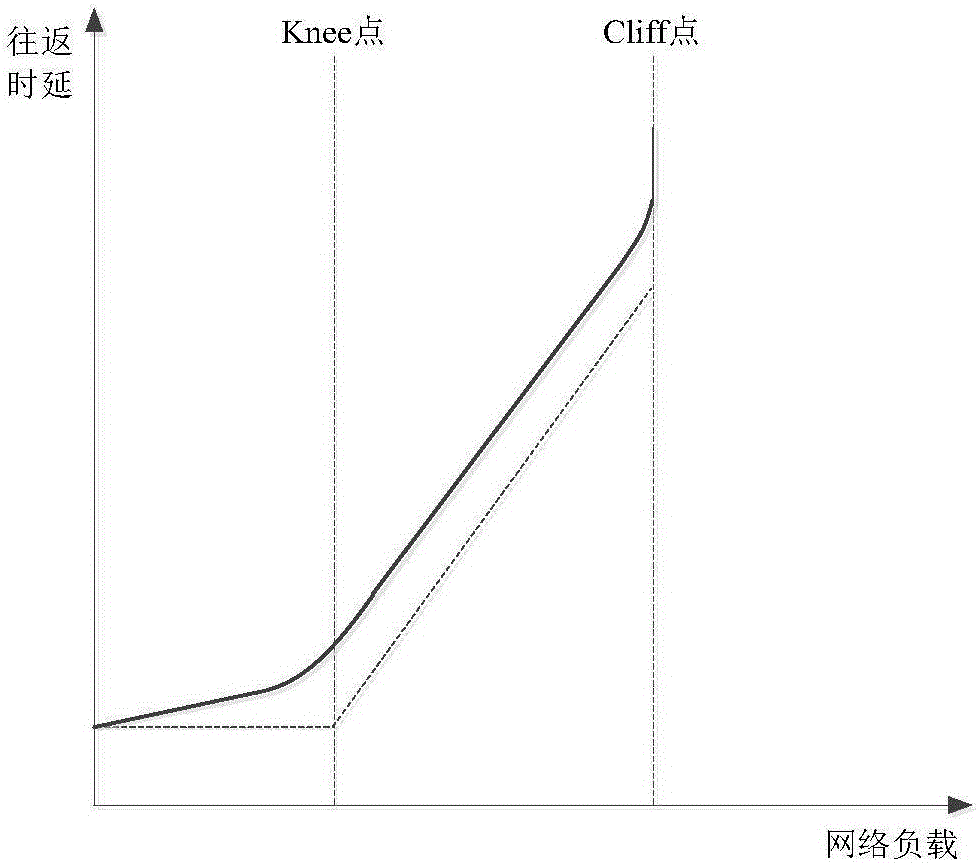Transmission method based on learning energy-efficiency model
A transmission method and learning technology, applied in the field of end-to-end reliable Internet transmission, it can solve problems such as lower bandwidth utilization than UDT, inability to accurately control and measure network status, etc., to achieve high bandwidth occupancy and reduce end-to-end delay.
- Summary
- Abstract
- Description
- Claims
- Application Information
AI Technical Summary
Problems solved by technology
Method used
Image
Examples
Embodiment Construction
[0034] The present invention will be further described in detail below in conjunction with the accompanying drawings and specific embodiments. A transmission method based on a learning energy efficiency model provided by the present invention includes the following steps:
[0035] Step 1: Receive ACK packets and record the round-trip delay vectors of all ACK packets received and send window size vector i represents the current time period, using the formula For the round trip delay vector Perform weighted smoothing, i-1 represents the previous time period, α is the weighted smoothing factor, D g,i is the round-trip delay value smoothed by the maximum delay value in the i-th period; this step is to track the historical change trend of the network and reduce the impact of random events on congestion control;
[0036] Step 2: In order to judge the changing trend of the congestion control window, according to the formula Solve the normalized delay change rate G i , wher...
PUM
 Login to View More
Login to View More Abstract
Description
Claims
Application Information
 Login to View More
Login to View More - R&D Engineer
- R&D Manager
- IP Professional
- Industry Leading Data Capabilities
- Powerful AI technology
- Patent DNA Extraction
Browse by: Latest US Patents, China's latest patents, Technical Efficacy Thesaurus, Application Domain, Technology Topic, Popular Technical Reports.
© 2024 PatSnap. All rights reserved.Legal|Privacy policy|Modern Slavery Act Transparency Statement|Sitemap|About US| Contact US: help@patsnap.com










